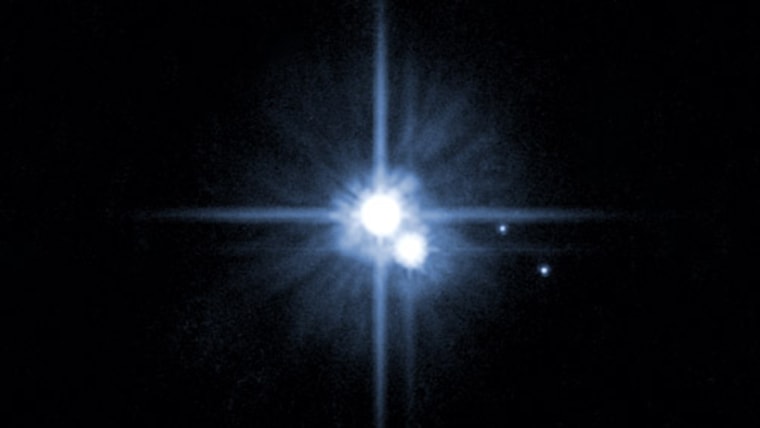Pluto’s distinctive heart-shaped sea is filled with ice that would be poisonous to people, astronomers said Thursday –- made up of frozen carbon monoxide and methane.
But elsewhere, huge mountains of water ice float in a nitrogen sea. And water ice makes up the bedrock of the distant minor planet, they reported.
And Pluto itself appears to still be alive, with active processes, including perhaps the swirling of liquid seas below its rugged surface, constantly re-shaping the top layers.
An international team of astronomers published their first in-depth report on Thursday from NASA's New Horizons mission’s close encounter with Pluto in July.
They reported earlier this month that Pluto has a thin blue atmosphere and mountains of ice.
The in-depth report, published in the journal Science, show vast plains, deep troughs and blade-shaped mountains. Two of Pluto’s moons, Nix and Hydra, sparkle with what appears to be water ice.
Even after traveling more than three billion miles, the sun’s radiation makes Pluto’s surface colorful, the scientific team reported.

“Energetic radiation falling on Pluto’s atmosphere and surface, each rich in nitrogen and methane, likely creates tholins that even in small concentrations yield colors ranging from yellow to dark red,” they wrote.
But analysis suggests this isn’t deep or strong ice.
“The mountains detected by New Horizons imagery therefore imply the presence of a widespread, stronger, presumably water ice–based, solid ‘bedrock.’ We further conclude that the observed N2, CO, and CH4 (nitrogen, carbon monoxide and methane) ices must only be a surface veneer above this bedrock,” they wrote.
“I was astonished to see such spectacular surface color and geological diversity," said University of Maryland astronomer Silvia Protopapa, one of the many scientists working on the study.
Careful measurements show that Pluto is 2,374 kilometers or 1,475 miles in diameter, a little smaller than what was previously thought.

Astronomers will be analyzing the data from New Horizons for years. Some of it will take another year to get back to our planet.
The spacecraft, which was launched in 2006, is now headed for an object in the Kuiper Belt called 2014 MU69, about a billion miles past Pluto.

